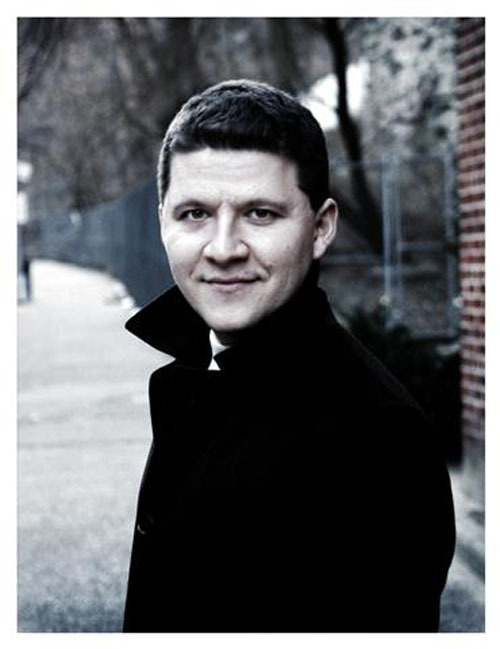Remembering the musical traditions of Europe’s Jews
Klezmer’s great comeback
by Tova Ross
Issue of July 2, 2010/ 20 Tammuz, 5770If you’ve ever waited impatiently at a wedding for the bride and groom to emerge for the first dance you might be interested to learn that just a century or two ago, Jewish weddings in Europe took place over several days, and music was a constant presence.
When the National Yiddish Book Center in Massachusetts featured the Alexander Fiterstein Trio in its season opener in April, it wasn’t just an enjoyable evening of music from a talented group of klezmer musicians: it was also part of Hankus Netsky’s mission to return Yiddish and European Jewish culture to a secular audience. Netsky, a musician and ethnomusicologist, is the founder and director of the Discovery Project at the National Yiddish Book Center. The Project works to recover artifacts from the immigrant and post-immigrant heritage of the Jewish people.
“The Book Center’s Discovery Project is helping to plug the gap in Jewish education, a gap that’s existed since after World War II,” explained Netsky. “Hasidic and Orthodox communities educate their children very well about the rich culture of Europe’s Jewish history, but in more traditional and less observant homes, that education has been sorely lacking.”
Netsky attributes the lack of instruction to a loss of pride in Jewish identity after the Second World War and to assimilation in the larger secular culture, as well as to the creation of the State of Israel. “The creation of Israel was a huge accomplishment for the Jewish people,” said Netsky, “but it invented a new culture and identity for the Jewish people that didn’t really leave a lot of room for the continuation of Eastern European culture. There’s a whole generation in Hebrew school right now that has no idea what went on in European Jewish communities for years and years.”
The Book Center regularly holds film festivals, art exhibits, book readings and musical tributes to help commemorate and disseminate Yiddish culture to the public. The event that featured the music of the Alexander Fiterstein Trio was focused on the Eastern European Jewish wedding and incorporated klezmer musical elements into the arrangements.
The Trio has quite a collection of musical pedigrees: Alexander Fiterstein, born in Belarus, trained at the famed Julliard School of Music, is now a world-renowned clarinet player. Cymbalist Walter Zev Feldman spearheaded a revival of klezmer music in the 1970’s and remains one of the foremost experts in the field. Accordionist Christina Crowder, is a founding member of the ensemble “Di Naye Kapeyle,” which researches and performs the traditional Jewish music of Eastern Europe.
Since the 17th century, traditional European weddings featured many musical forms, including meditative and penitential melodies preceding the wedding and the morning of the event; the “kale bevenyen” ceremony; and the wedding dances. A klezmer ensemble typically provided the music, led by a violin and accompanied by a cymbal, contra fiddle and contrabass. Clarinet and accordion later joined the ensemble. Oftentimes, klezmer musicians composed their own tunes, and were commissioned by the wedding party to create unique new music for the occasion.
The morning of the wedding, a melody called the dobriden was played to wake the bride and groom outside their homes. Tunes like the mazltov and the terkishers heralded the start of the wedding and to honor important guests, as well as to provoke a contemplative and spiritual atmosphere prior to the chuppah. During the wedding, both ritual tunes and popular ones, like the freylekhs and the sher, were played.
These unique compositions were abandoned when immigrants began arriving in America and many almost immediately shed their traditions. Though he did not grow up with many religious traditions, Fiterstein grew up hearing his grandparents speak Yiddish and enjoys being part of a new revival of the Yiddish language.
“While I don’t feel I’m on a mission to save Yiddish culture, I do cherish it because it reminds me of the rich culture from which my grandparents come,” said Fiterstein. “Eastern European Jewish and klezmer are such unique and specialized forms of music, and it’s wonderful to be a part of and to participate in because there’s a lot individuals can contribute.”
Netsky added, “There’s so many treasures to the Yiddish culture, with the traditional music of the Eastern European Jewish wedding being one of them. I want to make sure that’s preserved as people begin to realize that our grandparents’ heritage is something that not only should we not be ashamed of, but one that we should be proud of and pass on to future generations.”

 58.0°,
A Few Clouds
58.0°,
A Few Clouds 




